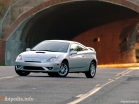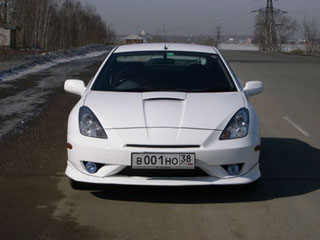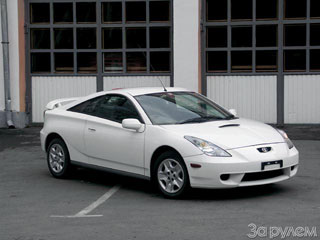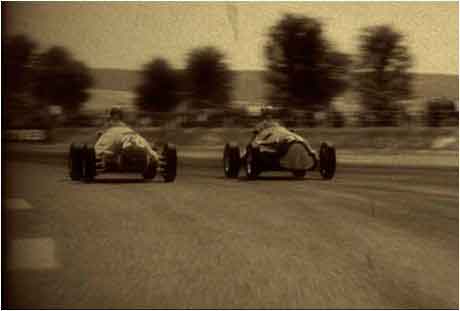Toyota Celica 2002 test drive - 2006 compartment
Toyota-Karina
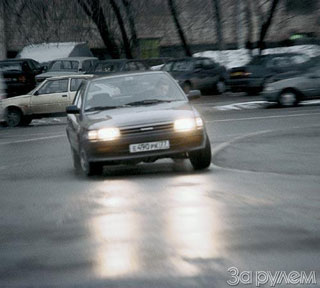 Model - Toyota Karina II 1.6xl; manufacturer - Toyota Motor (Japan); year of release - 1989; in operation while driving - since March 1997; mileage at the time of the report - 200 thousand km; Previous publications - ZR, 1998, No. 1.
Model - Toyota Karina II 1.6xl; manufacturer - Toyota Motor (Japan); year of release - 1989; in operation while driving - since March 1997; mileage at the time of the report - 200 thousand km; Previous publications - ZR, 1998, No. 1. Toyota cars have long established themselves in Russia as indestructible. Even in our harsh conditions - cold, salty snow, broken roads and very meager maintenance - they tirelessly wound hundreds of thousands of kilometers. To maintain them in constant combat readiness, only consumables are required, and those in non -thorough quantities are required. Today, when the car itself becomes a luxury, but its repair, it is especially valuable.
An important advantage of our machine is a set of gas equipment Vialle (Holland). GAZ price 1 p. 20 K. per liter is two to three times cheaper than gasoline. And the consumption is only a little more: in winter - 11 l/100 km, in the summer - less than 9. Two -time savings on the fuel alone. And also - in engine oil: it serves twice as long as during operation on gasoline. Considering that the cost of fuel and oil for the entire service life of a middle -class car is comparable with its initial price, it would be unreasonable to neglect such a benefit.
Yes, there are several inconveniences, but they, in our opinion, are insignificant. In frosts below -15o, the engine frozen over night is reluctant to go on gas. In order not to warm up a gas gearbox and an intake manifold boiling water in the morning, you need to switch the power to gasoline in the evening. The habit of doing this is restored with the first frosts, especially since it is enough to click the toggle switch.
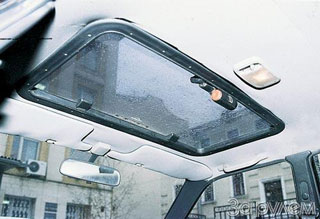 Every 20 thousand km of run, a gas gearbox must be removed to drain oilseed condensate from it - otherwise the diaphragm mechanism loses sensitivity and, when driving, the engine stops. There is no special plug for draining condensate in place - but amateur craftsmen can make it on their own.
Every 20 thousand km of run, a gas gearbox must be removed to drain oilseed condensate from it - otherwise the diaphragm mechanism loses sensitivity and, when driving, the engine stops. There is no special plug for draining condensate in place - but amateur craftsmen can make it on their own. It was experimentally established that when working on gas fuel, the gaps in the spark plugs are advisable to reduce to 0.6 mm. Otherwise, acceleration is accompanied by passes of flashes and jerks, although the engine works evenly on gasoline, sometimes even with millimeter gaps. Apparently, a short spark is thicker and hot, but for gas it is important.
The seven -kilitic gas cylinder, of course, occupies a significant part of the trunk, but, installed between the arches of the wheels, leaves enough space for luggage. At the same time, it disciplines - the trash, which is carried just in case, remains in the apartment or in the garage.
Alternative fuel engine power, of course, is slightly lower than on gasoline, but sufficient to briskly gain 170 km/h. Gasoline provides 10 km/h more, but so they are necessary?
So, there are no complaints about the engine: 200 thousand, and it seems to be in his prime. The chassis is also in order - nothing broke, with the exception of shock absorber racks. After 150 thousand km on the roads of Europe, in Russia they lasted only 30 thousand. We don’t take it to say whether this limit is natural or it said that the roads are worse, but all four had to be replaced with new Kayaba. Damage to the pocket amounted to $ 200. It’s good that pre -crisis, 6.4 rubles! Today, of course, rubles would have disappeared several times more.
The cables of the hand brakes were replaced: they rusted in the membranes and lost mobility. Without knowing the exact price, they ordered them in the store, making a small prepayment, and then there was nowhere to retreat: $ 110 per set - too expensive for a simple product. They would know - made from Zhigulevsky or Volgovsky.
That is what we did with the pipes of the exhaust system. They turned into a sieve, although the stainless steel muffler himself could still serve. Three hours of work by an autogen, and tightness is restored. It is a pity, a colleague, having asked for a car for urgent business, on a forest road he tied a home -made structure in a knot. There was no question of restoration, and the new system pulled a thousand still summer rubles.
The remaining malfunctions are trifles inherent in any car. For example, the deflector of warm air fence into the engine located above the intake manifold greatly rustled. Nevertheless, until it fell off at all, it works properly. In the future, we will put a homemade from galvanized steel - its configuration is quite simple, it is easy to make. The air filter safely suffered washing in washing powder and promises to work with a homemade sinetropon preventor for a long time. Oil, of course, was changed to a new one with each change of oil.
It was possible to repair the hinge of the wiper lever. This is not difficult. The worn tip of traction drilled along with the ball tip of the lever, cut the thread and fixed the thrust with a screw with a puck. For a month, the hinge has been working as new.
And the general state of the machine can be judged by the fact that instrumental inspection on one of the sad peaks has been passed on a common basis on the first attempt.
Andrey Sidorov
Source: The magazine "Driving"



